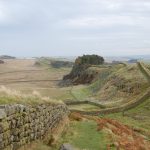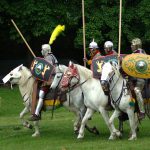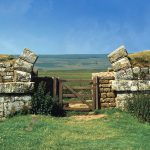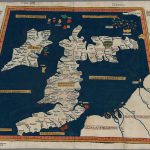Cvnetio Settlement
Minor Settlement and Possible Roman Fort
Cunetio or Cvnetio is a sprawling settlement of around 30 hectares lies on south bank of the River Kennet, at the crossroads formed by two major Roman roads; running east-west from Calleva Atrebatum (Silchester) to Aquae Sulis (Bath), and south-east to north-west from Venta Belgarum (Winchester) to Corinium Dobunnorum (Cirencester). There were potteries a short distance down the Silchester-Winchester road to the south-east at Savernake (SU2264) and other pottery kilns further along at Tottenham (SU2463). (O.S. maps)
Aerial photographs show streets and dwellings both inside and outside the defensive circuit of the town, though the sequence of building has not yet been determined. A.P.’s also suggest that the defences surrounding the nucleus of the town had at least two incarnations, the first of turf, the second of stone, upon a slightly different alignment and incorporating multangular bastions regularly spaced every 120 feet (c.36.7 m) along the enclosing wall; both of these aerial observations were subsequently confirmed by excavation. The defences comprised of a rampart fronted by a double ditch, visible on A.P.’s on the south, east and west sides, defined a rectangular area measuring some 870 feet from east to west by about 700 feet transversely (c.265 x 213 m), with rounded corner-angles (again visible on A.P.’s) at the two southern angles. The defended enclosure of about 14 acres (c.5.6 ha) is suspiciously military in outline but no finds of a proven martial nature have been forthcoming. (JRS 1953 pp.90-91)
Plans for the defensive circuit have yet to be published, but sections across the defences have shown that there were two distinct phases:
- The inner ditch was 12 feet wide and 7½ feet deep (c.3.66 x 2.29 m), while the outer ditch was 13 feet (c.3.96 m) deep and of unreported width. A berm 6 feet (c.1.83 m) wide separated the two ditches.
- The earthwork defences were replaced by a masonry wall with semi-octagonal, external wall-towers, which ran inside and parallel with the former defences on the east side, and outside them on the south and west sides. The towers are bonded into the walls and are probably therefore of one build, a terminus post quem which has been established by the finding of a coin of c. A.D. 360 in a ditch which antedates the walls.
Most of the information regarding the extent and nature of the settlement has been derived from surface finds, though some small-scale excavations have been undertaken. During excavation of a first century well, four items of military equipment were found, with samian fragments dateable to c. A.D. 50-60. An unreported number of Roman consular coins, and issues of Claudius, Nero, Vespasian and Domitian have also been recovered from within the confines of the settlement. The early dates attributed to some of the coinage, plus the finding of identifiable pieces of Roman military equipment, leads us to believe that there was a Roman fort here in the early stages of Roman conquest, perhaps c. A.D. 44. Excavations of the west gate show that it was flanked by two towers and possibly posessed of a set of purtcullis-like iron-grilles, which were indicated by the finding of two rows of four retaining post-holes arranged between the two towers. A lead coffin was found outside the defended area c.120 metres south. (Finch-Smith p.258)
References for Cvnetio
- Roadside Settlements in Lowland Roman Britain by Roger Finch Smith (B.A.R. British Series #157, 1987);
- Air Reconnaissance of Southern Britain by J.K. St. Joseph in J.R.S. xliii (1953) pp.81-97;
Map References for Cvnetio
NGRef: SU2169 OSMap: LR174
Roman Roads near Cvnetio
N (11) to Dvrocornovivm (Wanborough, Wiltshire) W (16) to Verlvcio (Sandy Lane, Wiltshire) E (18) to Thatcham (Berkshire) SE (18) to East Anton (East Anton, Hampshire) Possible road: S (24) to Sorviodvnvm
Sites near Cvnetio Settlement
- Littlecote Roman Villa (8 km)
Temple Or Shrine and Villa - Barbury Castle (10 km)
Iron Age Hillfort - Swindon Villa (15 km)
Pottery and Villa - Verlucio (24 km)
Minor Settlement - Cricklade Roman Settlement (26 km)
Minor Settlement - Andover (Leucomagus) Roman Settlement (27 km)
Minor Settlement - Thatcham (28 km)
Minor Settlement - Boscombe (32 km)
Villa - Turvey Settlement (32 km)
Possible Settlement - Frilford Temples (35 km)
Amphitheatre and Temple Or Shrine








